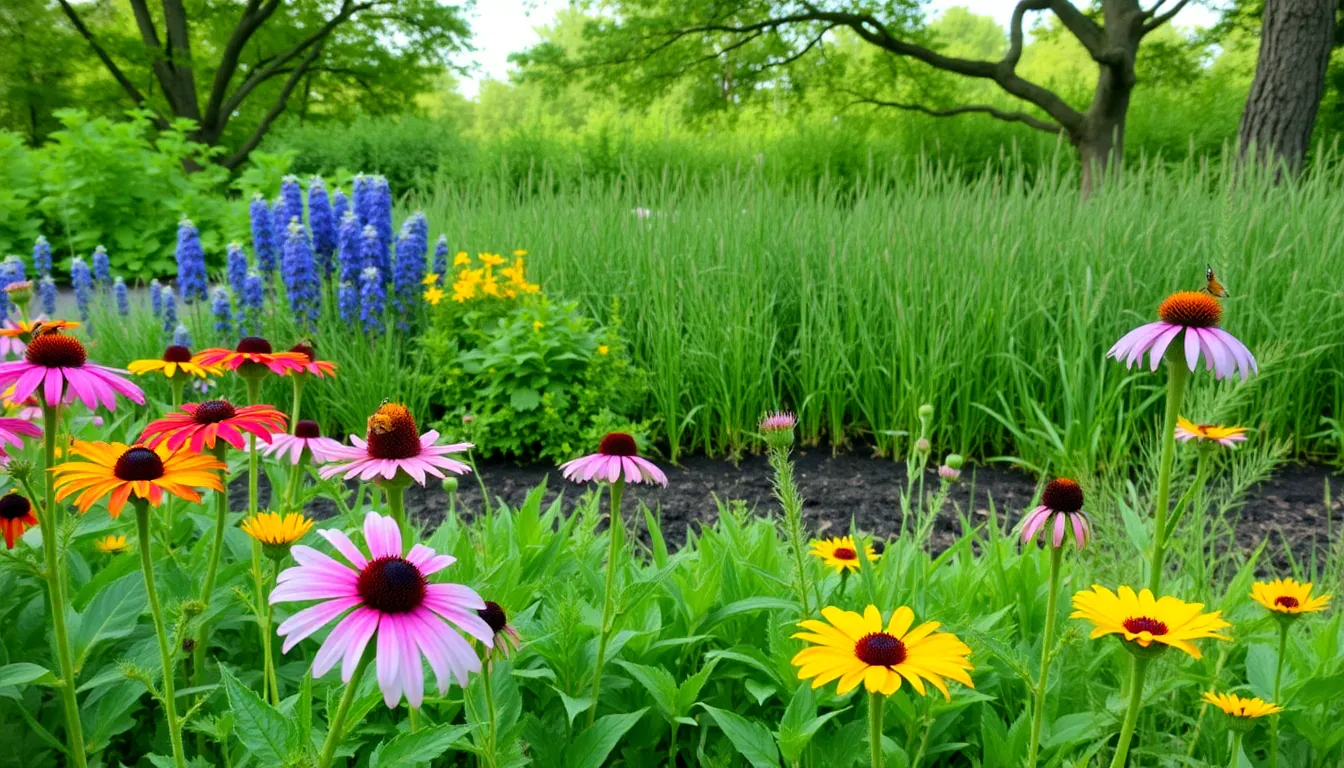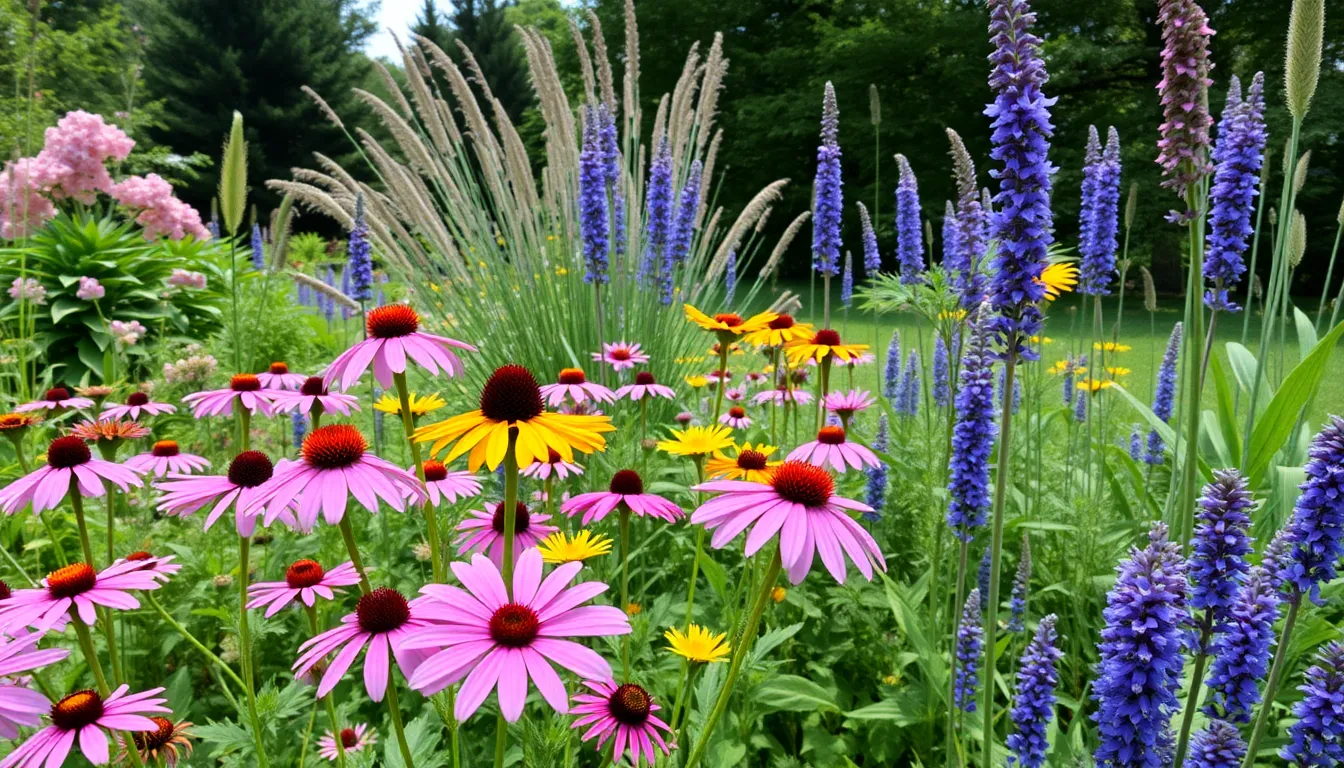When it comes to gardening in the Land of Lincoln, there’s a simple yet powerful secret: native plants are the unsung heroes of the Midwest. Not only are they stunningly beautiful, but they’re easy to care for and make the local wildlife rejoice. Imagine a garden that not only survives but thrives, attracting butterflies and birds while requiring less water and fewer chemicals. It sounds like a dream, right? Let’s dig deeper (pun definitely intended) into the world of native Illinois plants and discover their incredible benefits and what it takes to bring them into your home.
native illinois plants

Benefits To Local Ecosystems
Native Illinois plants play a pivotal role in maintaining ecological balance. These plants have evolved alongside local wildlife, creating symbiotic relationships that support various species. For example, native flowers provide essential nectar for pollinators like bees and butterflies. Also, their deep root systems help in preventing soil erosion, maintaining water quality, and recharging groundwater supplies. In essence, they’re the backbone of healthy ecosystems, ensuring that creatures big and small have a habitat to thrive in.
Cultural And Historical Significance
Historically, native plants have influenced Illinois’ culture and communities. Indigenous tribes relied on these plants for food, medicine, and shelter long before settlers arrived. Even today, many residents cherish the aesthetic and cultural legacy these plants bring to their surroundings. Restoring native gardens can serve as a poignant reminder of the state’s natural history, linking present residents to their ancestors and the land’s original inhabitants.
Enhancing Biodiversity
Biodiversity isn’t just a fancy word: it’s essential for a thriving environment. Native plants support an array of flora and fauna by offering food, shelter, and breeding grounds. When gardeners prioritize native species, they invite a variety of wildlife into their landscapes, creating a dynamic ecosystem. Studies consistently show that areas rich in native plants lead to healthier communities of birds, insects, and other wildlife. This isn’t simply a gardener’s hobby: it’s a vital contribution to preserving the local biodiversity that all Illinois residents can appreciate.
Common Native Plants In Illinois
Trees And Shrubs
Illinois is home to a plethora of native trees and shrubs, each with unique characteristics. The Eastern Redbud, with its striking pink flowers in early spring, captures attention as a landscape centerpiece. Also, the Sassafras tree, known for its distinctive leaf shapes, attracts both wildlife and curious gardeners alike.
Wildflowers And Grasses
Wildflowers add vivid colors and textures to any space. Think of the vibrant Purple Coneflower or the delicate Black-eyed Susan, both of which are not only beautiful but also attract essential pollinators. Ornamental grasses like Little Bluestem provide height and structure while offering shelter to various small creatures.
Vines And Ground Covers
For those looking to fill in gaps or soften edges, native vines and ground covers are a fantastic choice. The Virginia Creeper is a vigorous vine, adding lush green foliage while providing a habitat for birds. Ground covers like Creeping Jenny can help suppress weeds and stabilize soil.
How To Incorporate Native Plants Into Your Garden
Choosing The Right Plants
Before diving into the planting process, selecting the right native plants for your specific area is critical. Consider factors such as your garden’s sunlight exposure, soil type, and moisture levels. Local extension offices can provide invaluable resources and meet with native plant specialists for tailored recommendations.
Designing A Native Plant Garden
Once outfitted with the right plants, it’s time to design the garden. This doesn’t mean you need to adopt a wild, unkempt look. Mix taller plants, like sunflowers, behind shorter flowering plants, ensuring all can soak up the sunshine. Group plants with similar water and sunlight needs together, creating a harmonious environment. Whether designing a small garden or a larger landscape, the key is to create layers and pockets of color.
Maintenance Tips For Native Gardens
Although native plants are generally low-maintenance, gardening is never completely free of effort. Regular weeding is essential to keep invasive species at bay. Also, giving your native garden a good drink during prolonged dry spells is necessary, especially for newly planted specimens. Mulching can help retain moisture and suppress weeds, making maintenance even easier. Observing your plants regularly and adapting to their needs is the best way to ensure a thriving garden.

